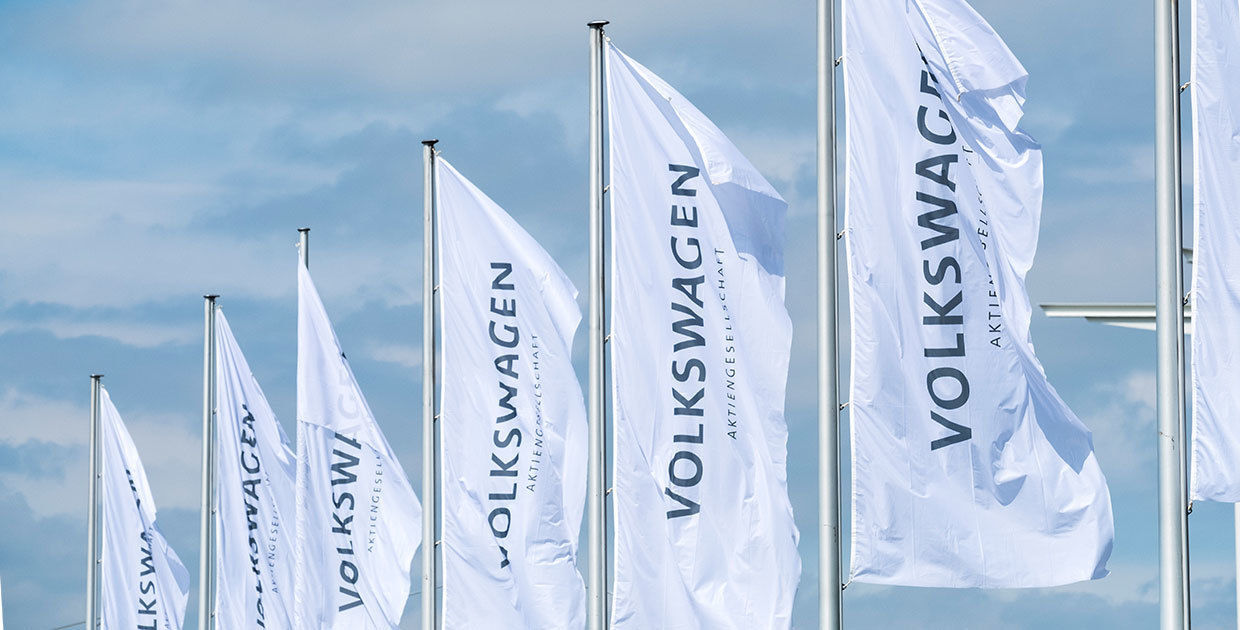Frank Witter, member of the Group Board of Management responsible for Finance and IT, said: “The first half of 2020 was one of the most challenging in the history of our company due to the Covid-19 pandemic. The health of our employees, customers and business partners is still the top priority. With our 100-points plan to ensure maximum health protection, we have, for example, created the best possible prerequisites for a safe working environment. At the same time, we introduced comprehensive measures aimed at reducing costs and securing liquidity early on, which enabled us to limit the impact of the pandemic on our business to a certain degree. Thanks to the great team effort, we have gradually been able to ramp up operations within the Group and up until now, have steadily managed to navigate through this unprecedented crisis. Due to the positive trend exhibited in our business over the past few weeks and the introduction of numerous attractive models, we look cautiously optimistic to the second half of the year.”
Percentage gap to prior-year month has been decreasing consistently since May
Until the end of June, the Volkswagen Group reported a sharp year-on-year decline of 27.4 percent in its deliveries to 3.9 (5.4) million vehicles. However, the Group was able to expand its global passenger car market share in an even more contracting overall market resulting from the pandemic. After deliveries came in at around 45 percent lower in April than the prior-year figure, the gap decreased consistently to around 18 percent in June. One reason for this was the recovery in Western Europe, the Group’s home market. Here deliveries in May were around 57 percent lower year-on-year, in June the figure was at 30 percent. The recovery of the markets continued in July. Therefore, the Group expects its deliveries in this month to be below the same month of the previous year, albeit only single-digit percentagewise. The markets are expected to continue to recover overall in the second half of the year.
Net liquidity in the Automotive Division rose over the first quarter
The net liquidity in the Automotive Division increased from EUR 17.8 billion at the end of March to EUR 18.7 billion at the end of June. In addition to comprehensive measures aimed at ensuring liquidity, this was also due to the successful placement of hybrid notes amounting to EUR 3.0 billion. At EUR – 4.8 billion, net cash flow in the Automotive Division was markedly below the previous year’s level of EUR 5.6 billion. Research and development costs in the first half of the year were down 4.8 percent year-on-year at EUR 6.7 (7.0) billion. However, the R&D ratio rose to 8.7 (6.6) percent due to the decline in sales revenue. The ratio of capex to sales revenue in the Automotive Division was significantly reduced by 20.6 percent to EUR 4.1 (5.2) billion. Due to the pandemic-related drop in sales revenue, the ratio of capex to sales revenue nevertheless rose to 5.4 (4.9) percent.
Positive operating profit still expected for the full year
The Volkswagen Group anticipates that deliveries to customers will be significantly down on the previous year in 2020 due to the impact of the Covid-19 pandemic. Challenges will also arise particularly from the increasing intensity of competition, volatile commodity and foreign exchange markets and more stringent emissions-related requirements. The sales revenue of the Volkswagen Group is expected to fall significantly below the previous year’s level in 2020 as a result of the Covid-19 pandemic. Overall, the Volkswagen Group anticipates the operating result for 2020 before and including special items to be severely lower than in previous year; however, in positive territory.
Expenditures for research and development (R&D) as well as capex will be significantly lower overall than in 2019 in absolute terms. In the Automotive Division, the R&D ratio and ratio of capex to sales revenue will exceed the previous year’s levels in 2020 due to lower demand and therefore considerably declining sales revenues. In view of the lower customer demand, further payouts as a result of the diesel crisis and cash outflows from mergers & acquisitions, net cash flow for 2020 is expected to be below the prior-year figure in the Automotive Division. As a result, net liquidity in the Automotive Division will also fall short of the previous year’s level. Return on investment (ROI) is anticipated to be lower than in the previous year due to earnings-related factors and below our defined minimum required rate of return on invested capital of 9 percent.
Brands and Business Fields
The Volkswagen Passenger Cars brand sold 1.1 (1.9) million vehicles from January to June of this year; this was 39.8 percent fewer than a year earlier. Nevertheless, sales of the T-Cross increased, thus bucking the trend, and the Atlas Cross Sport was also very popular. Sales revenue decreased by 35.3 percent to EUR 28.6 billion. Operating result before special items deteriorated to EUR –1.5 (2.3) billion. Lower fixed costs and better price positioning were unable to compensate for the impact of lower volumes due to the Covid-19 pandemic. The diesel issue gave rise to special items of EUR –0.6 (–0.4) billion in the reporting period.
Unit sales by the Audi brand fell to 416,000 (632,000) vehicles worldwide in the first six months of 2020. A further 271,000 (258,000) Audi vehicles were sold through the Chinese joint venture FAW-Volkswagen. The Q3, A6 and e-tron models recorded increasing demand. Sales revenue decreased to EUR 20.5 (28.8) billion. The operating result (current-year figure before special items) was EUR – 643 million (EUR 2.3 billion). The decrease in volumes, the impact of the measurement of commodity hedges and derivatives as well as negative exchange rate effects and greater sales incentives were adverse factors, which were partly offset by reduced fixed and development costs and the deconsolidation effect from the divestment of AID. The diesel issue resulted in special items of EUR –0.1 billion in the first half of 2020. The financial key performance indicators for the Audi brand include the Lamborghini and Ducati brands. Lamborghini sold 3,604 (4,710) vehicles and Ducati sold 22,790 (33,315) motorcycles in the reporting period.
The ŠKODA brand sold 372,000 vehicles in the first half of this year, making it 33.6 percent fewer than in the same period of 2019. The Kodiaq and Karoq SUVs and the new Scala and Kamiq models were especially popular with customers. Sales revenue decreased to EUR 7.5 (10.2) billion, operating profit fell to EUR 228 (824) million. Product cost optimizations and lower fixed and development costs were unable to make up for the negative impact of lower volumes, exchange rate effects and emissions-related expenses.
Unit sales at the SEAT brand stood at 197,000 vehicles in the reporting period; a decline of 46.9 percent year-on-year. The Arona and Ateca SUV models and the Leon were in high demand. At EUR 3.7 billion, sales revenue was down 40.2 percent on the previous year. The operating result fell to EUR – 271 (216) million, mainly due to the lower volumes as a result of the pandemic and emissions-related expenses.
Unit sales by the Bentley brand stood at 4,569 (4,670) vehicles in the first half of 2020. Sales revenue improved to EUR 860 (835) million on the back of mix effects. The operating result fell to EUR –99 (57) million due to higher depreciation and amortization charges and one-off expenses for restructuring measures.
Porsche Automotive recorded global sales of 116,000 vehicles from January to June 2020, down 14.8 percent year-on-year. Sales revenue amounted to EUR 11.2 (12.2) billion. Lower vehicle sales as well as cost increases, particularly for digitalization and electrification, meant that the operating profit fell EUR 1.1 (2.1) billion. In addition, changes in exchange rates had a negative impact.
Unit sales by Volkswagen Commercial Vehicles fell to 157,000 (256,000) vehicles worldwide in the first half of 2020. Sales revenue stood at EUR 4.2 billion, a decline of 34.7 percent compared with the previous year. The operating result fell to EUR –334 (506) million, primarily adversely affected by the decrease in volumes and the CO2 incentive tax applicable from this year. Moreover, higher upfront expenditures and write-downs for new products, increases in fixed costs as well as less favorable exchange rates had a negative effect, while product cost optimizations and mix effects had a positive impact.
Scania Vehicles and Services sold 31,000 (52,000) vehicles in the first six months of 2020. Sales revenue amounted to EUR 5.3 (7.1) billion. Operating profit at Scania Vehicles and Services fell to EUR 221 (828) million. The decline was primarily due to the lower volume. Improvements in the mix and lower fixed costs offset this.
MAN Commercial Vehicles sold 47,000 vehicles in the period from January to June of this year. This figure fell 34.1 percent short of the 2019 comparison period. Sales revenue decreased to EUR 4.7 (6.3) billion. Operating result fell to EUR –423 (248) million, mainly due to the lower volume for new and used vehicles and costs incurred in connection with the introduction of the new generation of trucks.
In the first six months of 2020, Power Engineering generated sales revenue EUR 1.8 (1.9) billion. Operating profit declined to EUR 21 (42) million due to volume and cost factors; changes in the mix resulted in a positive effect.
Customers signed 3.4 (4.1) million new financing, leasing, service and insurance contracts with Volkswagen Financial Services in the first half of this year (–17.4 percent). The total number of contracts as of June 30, 2020, stood at 21.3 million, down 0.9 percent on the end of 2019. Operating profit fell to EUR 1.2 (1.3) billion in the first six months of 2020.
Annual General Meeting will take place on September 30, 2020; dividend proposal amended
September 30, 2020 has been set as the new date for the Annual General Meeting for the 2019 fiscal year. After the Annual General Meeting, originally scheduled for May, was postponed due to the spread of coronavirus, the meeting in September cannot be conducted in the usual manner either. To protect the health of shareholders, employees and service providers, this year’s Annual General Meeting will be held on a virtual platform. At the same time as announcing the new date, the Management has also submitted an amended dividend proposal. The large-scale disruption to all aspects of everyday life and economic activity caused by the Covid-19 pandemic has also affected the Volkswagen Group worldwide. Given the scale and extent of the impact and the current inability to reliably estimate future developments, the Board of Management and the Supervisory Board have resolved to propose now to the Annual General Meeting a dividend of EUR 4.80 per ordinary share and EUR 4.86 per preferred share. The Company’s Management has thus amended the proposed dividend previously announced for the 2019 fiscal year of EUR 6.50 per ordinary share and EUR 6.56 per preferred share. The remaining net retained profits of EUR 855 million will be carried forward to next year’s accounts. Volkswagen AG continues to be committed to the aim of achieving a distribution ratio of at least 30 percent.








